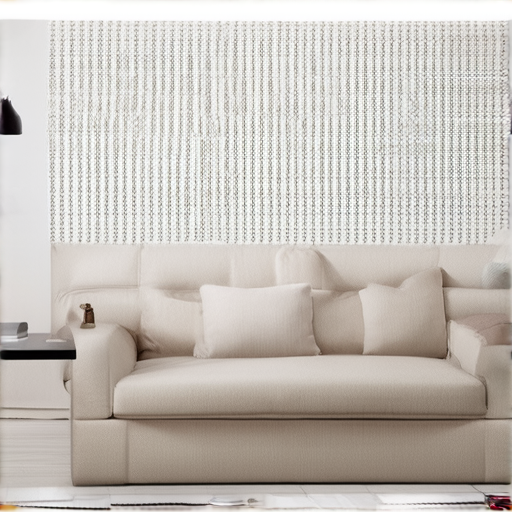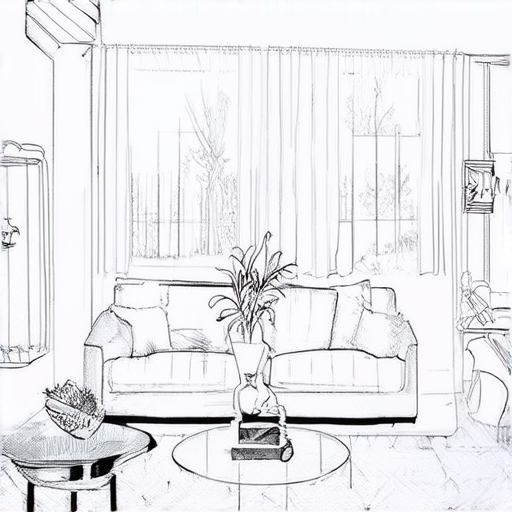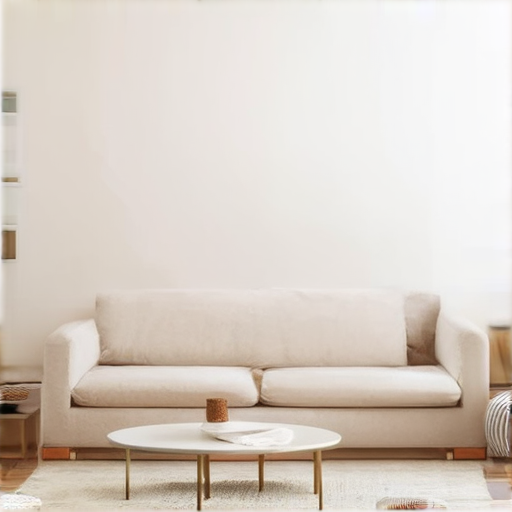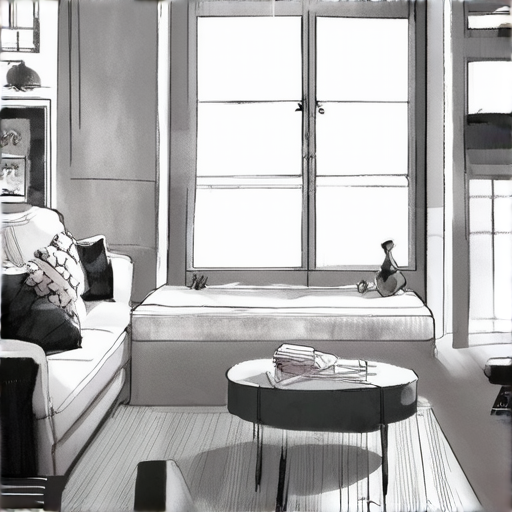Creating a minimalist home design requires a thoughtful approach to decluttering, simplicity, and functionality. By embracing the principles of minimalism, homeowners can achieve a clutter-free living space that promotes relaxation, productivity, and visual appeal. From understanding the key elements of minimalist home design to applying its principles to your home decor, we’ll explore the essential tips and strategies for creating a beautiful and functional minimalist space.

Creating a Minimalist Home
To achieve a minimalist home, start by decluttering and simplifying your space.
-
Declutter and Purge Unwanted Items
Get rid of items you no longer need, use, or love. Donate, sell, or discard items that don’t bring you joy or serve a purpose.
-
Simplify Your Furniture
Choose multi-functional furniture pieces that serve more than one purpose. Consider investing in a few high-quality, timeless pieces rather than many cheap, trendy ones.
-
Select a Limited Color Palette
Stick to a simple color scheme that promotes calmness and serenity. Neutral colors like white, gray, beige, and blue can create a soothing atmosphere.
-
Add Natural Textures
Incorporate natural textures like wood, stone, and plants to add depth and visual interest to your space.
-
Utilize Vertical Space
Make the most of your walls by using floor-to-ceiling shelves, storage units, or hanging curtains to keep floors and surfaces clutter-free.
-
Invest in Quality Lighting
Choose lighting fixtures that provide ample natural light during the day and soft, warm glow in the evening. Consider installing LED bulbs for energy efficiency.
-
Create a Calming Atmosphere
Use aromatherapy, essential oils, or scented candles to promote relaxation and reduce stress. Soft music or nature sounds can also contribute to a peaceful ambiance.
-
Maintain a Clean and Organized Space
Establish a regular cleaning routine to keep your home tidy and clutter-free. Invest in storage solutions and labels to maintain organization and order.
-
Emphasize Functionality
Prioritize functionality over aesthetics when designing your space. Choose furniture and decor that serves a purpose and contributes to a sense of calm and serenity.
-
Consider Professional Help
If you’re struggling to create a minimalist space, consider hiring a professional organizer or interior designer who can provide personalized guidance and support.
Principles of Minimalist Interior Design
We believe that a well-designed space can greatly impact our mood and productivity, which is why we’re excited to share our take on minimalist interior design.
-
Emphasis on Simplicity
-
Functionality Over Form
-
Neutral Color Palette
-
Natural Light
-
Textiles and Patterns
-
Editing and Curating
-
Sustainable Materials
-
Flexibility and Versatility
A minimalist space focuses on clean lines, minimal ornamentation, and a limited color palette. By stripping away unnecessary elements, we can create a sense of calmness and serenity.
In a minimalist space, functionality takes precedence over aesthetics. Every piece of furniture serves a purpose, and clutter is kept to a minimum.
A neutral color scheme is a hallmark of minimalist design. Shades of white, gray, beige, and taupe create a soothing atmosphere and provide a blank canvas for adding pops of color through artwork and accessories.
Natural light is essential in a minimalist space. Large windows, skylights, and mirrors help reflect light and create a sense of airiness.
Minimalist design often incorporates textiles and patterns in subtle ways, such as throw pillows, blankets, and rugs. These elements add visual interest without overwhelming the senses.
The key to successful minimalist design is editing and curating. We must carefully select the items that bring us joy and remove those that don’t.
Minimalist design often prioritizes sustainable materials and eco-friendly practices. Reclaimed wood, low-VOC paints, and energy-efficient appliances contribute to a healthier environment.
A well-designed minimalist space should be flexible and versatile, allowing for easy rearrangement and adaptation to changing needs.
By incorporating these principles into our design process, we can create spaces that promote relaxation, productivity, and overall well-being.
For more information on how to incorporate minimalist design into your own space, check out our minimalist design tips and explore our collection of minimalist furniture pieces.
At Peck and Gartner, we’re passionate about helping you create a space that reflects your unique style and promotes your well-being. Contact us today to learn more about our design services and how we can help you achieve your vision.

Key Features of Minimalist Design
Minimalist design is characterized by simplicity, clean lines, and a limited color palette.
- Simplicity: Minimalist design eliminates unnecessary elements, focusing on the essence of a product or space.
- Clean Lines: Clean lines and minimal ornamentation give minimalist designs a sense of elegance and sophistication.
- Monochromatic Palette: A limited color palette helps to create a cohesive look and feel, often featuring a dominant neutral color.
- Accent Color: A single accent color adds visual interest and creates a pop of color in an otherwise monochromatic space.
- Open Floor Plan: Open floor plans promote a sense of spaciousness and freedom, allowing for easy movement between rooms.
- Lots of Light: Ample natural light enhances the sense of openness and airiness, making spaces feel larger and more inviting.
- Functional Furniture: Functional furniture pieces are chosen for their simplicity and versatility, rather than their ornate details.
- Essential Elements: Minimalist design focuses on the shape, color, and texture of a few essential elements, eliminating clutter and distractions.
By incorporating these key features, minimalist design creates a sense of calm, serenity, and sophistication, perfect for those seeking a peaceful and organized living or working environment.
Benefits of Minimalist Design
- Reduced Stress: Minimalist design promotes a sense of calm and reduces stress caused by clutter and visual overload.
- Increased Productivity: A clutter-free and organized space boosts productivity and focus, helping individuals stay motivated and engaged.
- Improved Aesthetics: Minimalist design creates a visually appealing and elegant atmosphere, perfect for showcasing personal style and taste.
- Cost-Effective: By focusing on essential elements and eliminating unnecessary items, minimalist design can be cost-effective and budget-friendly.
Creating a Minimalist Space
To create a minimalist space, consider the following tips:
- Purge Unnecessary Items: Get rid of items that are no longer needed or useful, donating or recycling whenever possible.
- Select Essential Pieces: Choose furniture and decor that serves a purpose and adds visual interest.
- Emphasize Natural Light: Make the most of natural light by keeping windows unobstructed and using sheer curtains or blinds.
- Use a Limited Color Palette: Stick to a monochromatic color scheme or a single accent color to create a cohesive look.
- Add Texture and Pattern: Incorporate texture and pattern through rugs, throw pillows, and other decorative elements to add depth and visual interest.

Colors Used by Minimalists
We often associate minimalism with simplicity and clean lines, which can extend to the color palette used in minimalist homes.
- Neutral Colors: Soft grays, whites, and off-whites are staples in minimalist decor, providing a calm backdrop for furniture and artwork.
- Natural Hues: Earthy tones like beige, taupe, and moss green bring warmth and coziness to a space without overwhelming the senses.
- Deep Jewel Tones: Rich shades of navy blue, emerald green, and charcoal gray add depth and sophistication to a room, balancing out the simplicity of minimalist design.
- Monochromatic Schemes: Using various shades of a single color creates a cohesive look and adds visual interest to a space.
When choosing colors for a minimalist space, consider the mood and atmosphere you want to create. A calming color scheme can promote relaxation, while a bold choice can energize the area.
At Peck and Gartner, we believe that the right color palette can elevate a space and enhance its functionality. Our team of experts can help you select the perfect colors for your minimalist home.
Popular Minimalist Color Palettes
- Benjamin Moore’s “Snowfall White”: A crisp, clean white that sets the tone for a serene and peaceful environment.
- Behr’s “Soft Chamois”: A warm, inviting beige that brings a sense of comfort and relaxation to a space.
- Valspar’s “Driftwood Gray”: A soothing, weathered gray that adds a touch of coastal charm to a room.
Remember, the key to successful minimalism is balance and restraint. By selecting a few core colors and sticking to them, you can create a harmonious and visually appealing space that reflects your personal style.
Colors That Are Falling Out of Style
We’ve spoken to designers who predict which paint colors will be less popular in 2025.
- Mustard: A color reminiscent of the 1970s, mustard is expected to fade from popularity in 2025.
- Peach: Another retro-inspired hue, peach is predicted to lose its appeal in the coming year.
- Teal: While still a popular choice for accent walls, teal is expected to decline in favor among homeowners in 2025.
- Burgundy: A rich, bold color often associated with luxury, burgundy is predicted to fall out of style in 2025.
- Turquoise: A vibrant, blue-green color commonly seen in mid-century modern decor, turquoise is expected to lose its luster in 2025.
- Coral: A pastel pink-orange color often used in coastal-themed designs, coral is predicted to decline in popularity in 2025.
- Lime Green: A bright, energetic color commonly used in retro-inspired decor, lime green is expected to fall out of style in 2025.
- Avocado Green: A muted, yellowish-green color often associated with 1970s-era kitchens, avocado green is predicted to lose its appeal in 2025.
As we move into 2025, it’s essential to stay ahead of the curve and choose colors that reflect the latest design trends. At Peck and Gartner, our team of experts can help you select the perfect paint colors for your next project.

Which Color Scheme is Mostly Used in Minimalistic Designs
Since minimalistic designs are expected to be elegant and simple, grey, black and white shades are mostly used.
- Grey: A popular choice for minimalistic designs due to its versatility and ability to evoke a sense of calmness.
- Black: Often used as an accent color to add contrast and depth to a design.
- White: Frequently used as a background color to create a clean and minimalist look.
We often see these colors combined in various ways to create a visually appealing and harmonious design.
At Peck and Gartner, we believe that understanding the principles of minimalistic design can help you create a beautiful and functional living space.
For more information on how to incorporate minimalistic design into your home, check out our guide on Minimalist Design Tips.
Additionally, you may want to explore the work of other designers who specialize in minimalistic design, such as Design Milk or Hunker.
By incorporating these principles and colors into your design, you can create a space that is both aesthetically pleasing and functional.

0 Comments